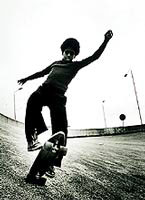Stylish Soul
Sara Manuelli reviews the book Seen: Black Style UK, which charts the influence of young black Britons born and raised in the 1960s and 1970s

There has always been an intersection between black youth culture and underground culture. As self-inspired movements, they both bubble from the bottom-up to become mainstream, pushing the values of street and club life into everyday jargon. Yet there is also a feeling that a book, which recognises the influence of UK Black culture, is long overdue. As a British phenomenon, it has an autonomous strength, having risen over the past 30 years as a cultural, musical, fashion force that is comparable only to its American counterpart.
In the foreword to Seen: Black Style UK, cultural commentator Ekow Eshun defines the book’s mission. ‘Seen is a visual record of the style and fashions of young black Britons, born and raised in this country from the 1960s and 1970s onwards. Unlike many of our parents, we didn’t arrive here suitcase in hand, wearing our Sunday best and shivering against the cold. Our relationship with Britain is more intimate and less formal than theirs. We know the possibilities this country holds. And we know its prejudices too. Yet Seen isn’t an attempt to create some kind of official history of black style and youth culture. Neither is it trying to redress negative representations of black people with images of smiling, happy unity. To put it another way, this is not a whitewash. Seen is about who we are, not who we should be.’
And who ‘they’ are is strongly articulated by 300 photographs, compiled by Jake Cunningham and Steve Lazarides of photographic agency PYMCA, and designed by Tristan Dellaway at Big Corporate Disco.
From Dreads, Soul Boys, Ravers and Two Step crews, this is a visual encyclopedia of styles and fads, but even more importantly, of how young UK black identity has defined, invented and promoted itself over the years. Among the photographers, there are works by Desmond Morris, Adrian Boot and Liz Johnson-Artur, who are all well established, visual reporters of youth and black culture. Real life documentary is mixed with glossier style, fashion and music photography.
The text element of the book avoids popular culture theorisation and goes straight into first-hand recollections. Interviews with DJs Norman Jay and Trevor Nelson interestingly reveal more about their label obsessions than their vinyl collections. For Jay, it was the double-breasted jackets with silver-plated buttons and a hankie in the top pocket Soul Boy-look that did it. As he puts it, ‘The Soul Boy thing comes from the Mod tradition. It’s about attention to detail; looking right and wearing clothes in an understated way as opposed to an overstated way.’
Nelson recalls the dress code for London’s Electric Ballroom club. While the electro boogie downstairs floor favoured a Raiders of the Lost Ark-look, for example, ‘a brown, distressed leather flight jacket, ankle boots and trousers tucked into them’, in the upstairs jazz fusion floor ‘you could dance in the same boots, but you’d take your jacket off’.
The youth of today will probably find those recollections dated, as UK garage-style hits the dancefloor. But it’s good to finally have both on the record.
Black Style UK is published by Booth Clibborn on 19 September and priced £27.50
-
Post a comment




